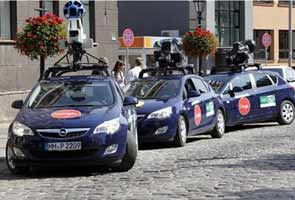If you wake up on holidays or anniversaries, eager to see what the Google Doodle for that day looks like, and / or you have some doodle ideas of your own, then this new job posting by Google may just be your thing. Google, reportedly is on a lookout for graphic designers/ illustrators (doodlers), who would work with their creative team responsible for those creative doodles on the Google homepage. A brief job posting by Google, reads like this - "First impressions matter. Every day, hundreds of millions of online users visit the Google homepage. Yes, to search. But also, to be delighted, informed, and surprised (And maybe even to laugh a little). The Google Doodle makes this possible -- it's the change that is constant on Google.com. As a Product Graphic Designer/Illustrator, more commonly known as a "Doodler," you have the world's best platform to showcase your stylistic skills -- as well as your sense of humor, love of all things historical and imaginative artistry. From Jules Verne to Pac-Man, you have the reins to our brand and iconic logo and can run free with your innovative ideas. Go forth and doodle!"
Google Doodles for Robert Doisneau
The Google Doodle has been around, entertaining Google-ers for a while now and was born in 1998, even before the company was even incorporated. The story goes like, Google founders Larry and Sergey decided to play with their corporate logo to indicate their attendance at the Burning Man festival in the Nevada desert. The first doodle, featured a stick figure that was placed behind the second 'O' in the word Google. Google adds, "the revised logo was intended as a comical message to Google users that the founders were "out of office"". Till date, Google has 1,000 doodles that were put on their homepages across the world.
Those Googling today would see that Google has doodled for French photographer, Robert Doisneau. He was born on this day in 1912 in Gentilly, Val-de-Marne, Paris. When he was 13, Doisneau enrolled himself at the École Estienne, a craft school and graduated from there in 1929 armed a diploma in engraving and lithography. Doisneau had a humble, very shy beginning with photography; and it was only after a while of photographing cobble-stones that he managed to click children and adults. It was in late 1920s that he bagged a job as a draughtsman (lettering artist) in the advertising industry at Atelier Ullmann (Ullmann Studio), a creative graphics studio that specialised in the pharmaceutical industry. It was here, at Atelier Ullmann that Doisneau developed into a staff photographer after initially helping out as a camera assistant. He, however, soon quit the studio and advertising to take up job as an assistant with the modernist photographer André Vigneau.
Doisneau is believed to have taken some of his best photographs in the post-war period. He soon returned to freelance photography and sold photographs to Life and other international magazines. He remained with Rapho agency throughout his working life. In 1948, he was even contracted by Vogue to work as a fashion photographer, but, a street photographer at heart that he was; Doisneau found himself capturing the streets of Paris on camera, whenever he found the time. But, it was in 1950 that he was to do the most recognizable work for Life and it was called - Le baiser de l'hôtel de ville (Kiss by the Hôtel de Ville), which essentially was a photo of a couple kissing in the busy streets of Paris. This photo went on to become an internationally recognised symbol of young love in Paris and the identity of the photographed couple remained hidden until 1992.
Doisneau died in 1994 and is buried in the cemetery at Raizeux beside his wife Pierrette.




















